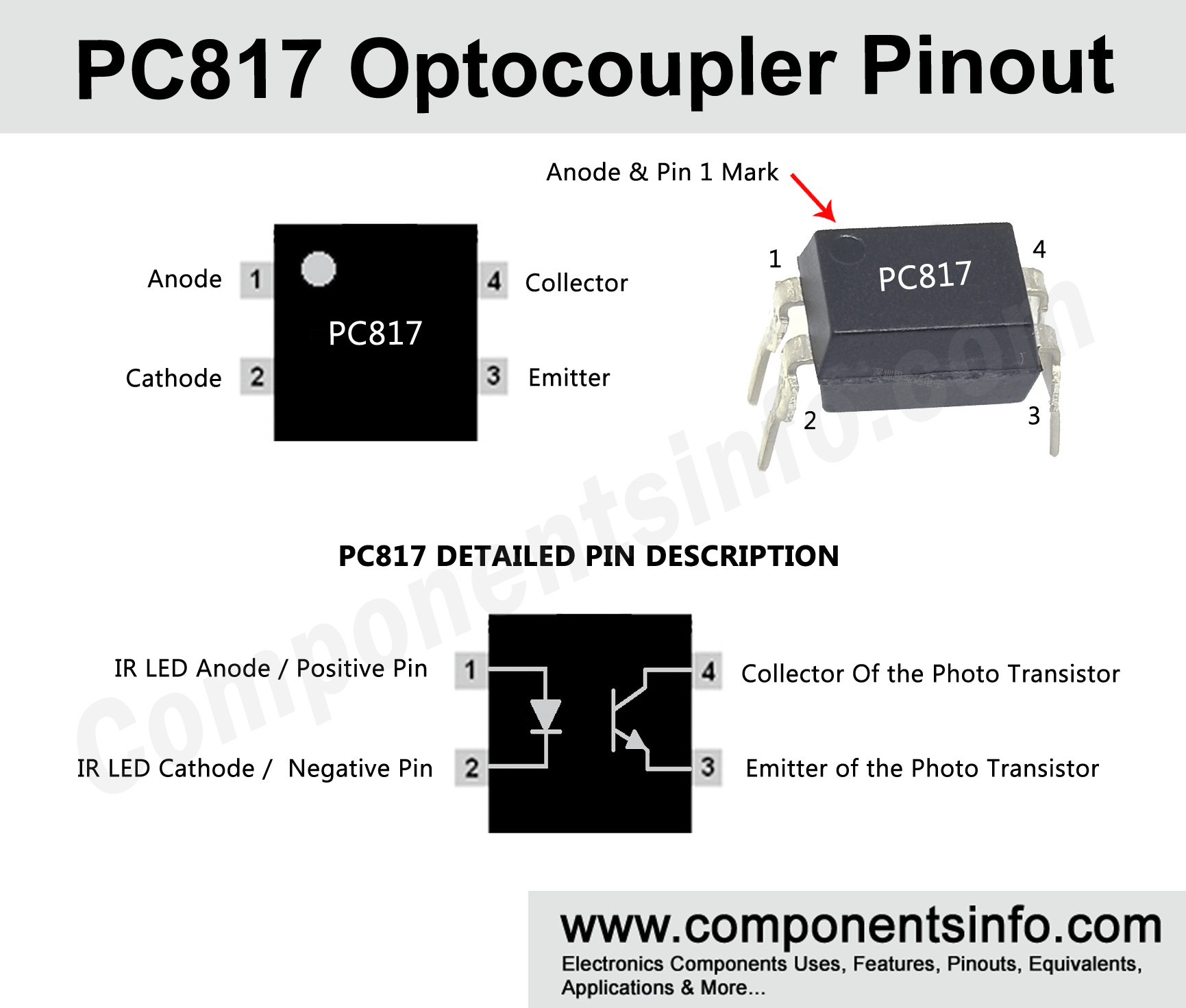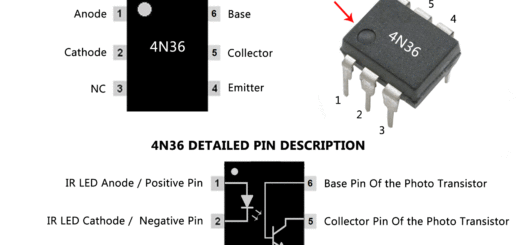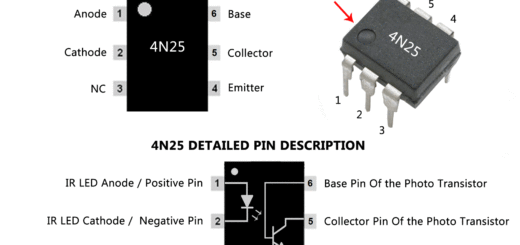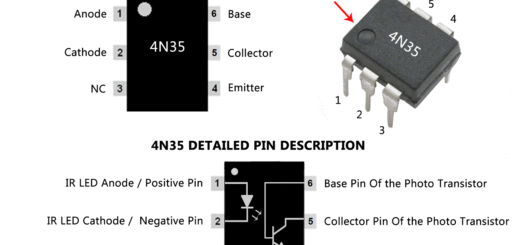PC817 Optocoupler Pinout, Datasheet, Equivalent, Features & Other Details
PC817 is a widely used optocoupler, this article describes PC817 optocoupler pinout, datasheet, equivalent, features & other details on how and where to use it in your electronic circuits.

PC817 Features / Technical Specifications
- Package Type: 4 Pin Dip & SMT
- Transistor Type: NPN
- Max Collector Current(IC): 50mA
- Max Collector-Emitter Voltage (VCEO): 80V
- Collector-Emitter Saturation Voltage: 0.1 to 0.2
- Max Emitter-Collector Voltage (VEBO): 6V
- Max Collector Dissipation (Pc): 200 miliWatt
- Max Storage & Operating temperature Should Be: -55 to +120 Centigrade for storage & -30 to +100 for operating
PC817 Optocoupler Explained / Description
Optocouplers also called photocouplers & opto isolators, they are IC type looking components available from 4 pins to many numbers of pins, they are mostly used for isolating of two circuits from each other. PC817 is a commonly used Optocoupler, it contains one IR LED and one photo transistor in its package. Its working is simple, when a used apply voltage to the IR LED which is connected on pin 1 and 2 the LED become activated and the light is received by the internal phototransistor hence making it in saturation state due to which it connects the pin 3 and 4 with each other. PC817 is a widely used optcoupler and works well in electronic circuit for a single isolation task. If you require more isolation tasks at the same time then you can also use other optocouplers that contains couple of IR LEDS and phototransistors in a single package.
Applications
Isolation between any type of two circuits
Output of Microcontrollers to control devices
Sensor Circuits
Power suppliers and chargers
Office and home appliances
Digital circuits
Replacement and Equivalent Part Numbers
The replacement and equivalent of PC817 optocoupler are PC816, PC123, TLP621, TLP321, TLP421, PC17K1, H11A817, SFH615A, PS2501-1, PS2561-1, PS2571-1, LTV-816, LTV-817(-V), LTV123, LTV-610 K1010, K817P, SFH615A
Where TO Use PC817 Optocoupler
If you are going to design an electronic circuit in which there is a chance of voltage spikes or voltage surge which may weak or destroy the components or the circuit then you can use the PC817 optocoupler to isolate the circuit. Moreover it can also be used to remove noise from an electronic signal, isolate DC and low voltage circuits from AC and high voltage circuits. You can also use it where you want to control larger voltage or AC voltage from small any small signal which can be a digital signal or analog.
How TO Use PC817 Optocoupler
Using PC817 optocoupler is very easy, there are four pins shown in the above pinout details. The pin 1 is anode or positive pin of the IR LED should be connected from the output signal of your circuit and pin2 should be connected to the ground. The other part of the circuit which you want to isolate or controlled should be connected with the pin3 (Emitter of the photo transistor) and pin4 (Collector of the photo transistor). The pin3 and pin4 works same as any other normal transistor for example a BJT transistor’s emitter and collector.
How to Safely Long Run in a Circuit
To safely long run this component in your circuit is recommended to always stay below the absolute maximum ratings. Do not drive load more than 50mA, The internal IR LED can be derived same as you drive any other normal LED with a current limiting resistor therefore always use a current limiting resistor at the pin1 of optocoupler which is the IR LED anode or positive pin. Do not operate the device in temperature below -30 centigrade and above 100 centigrade and always store in temperature above -55 centigrade and below 125 centigrade.
Download Datasheet
To download the datasheet just copy and paste the below link in your browser.
http://www.datasheetcafe.com/wp-content/uploads/2015/09/PC817.pdf


